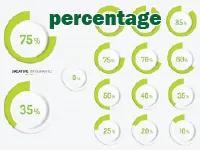
English vocabulary and phrases on Mid-Autumn Festival
percentage means . Learn how to pronounce and use percentage through vivid examples and easy-to-understand exercises.

Okay, let's break down how to pronounce "percentage" in English. It's a tricky one for many learners! Here's a breakdown:
The whole word is pronounced: PER-sen-TAHJ
The primary stress (the loudest syllable) is on the second syllable: PER-sen-TAHJ.
Resources to Hear It:
Tips for Practice:
Would you like me to:
Let's break down how to use the word "percentage" in English. It's a really common and useful word!
Here's a breakdown of how to use "percentage" in various contexts:
Describing Ratios and Fractions:
Calculating Percentages:
Expressing Possibilities and Probabilities:
Describing Statistics:
"Percentage points": Used to describe the difference between two percentages.
"Percentage basis": Often used in finance and business.
"Above/Below Percentage":
Example Sentences to Practice:
Resources for Further Learning:
Would you like me to:
Choose ALL correct options that fit the blank meaningfully and grammatically.
The latest market analysis showed that the ______ of consumers who prefer sustainable products is growing rapidly. a) percentage b) proportion c) fraction d) aggregate
The meteorologist predicted a high ______ of rain for the upcoming weekend. a) amount b) chance c) forecast d) likelihood
The company proudly announced a significant ______ of its workforce now telecommutes, resulting in a reduced environmental impact. a) segment b) portion c) percentage d) share
The CEO emphasized the critical need to increase the ______ of sales in emerging markets. a) volume b) quantity c) value d) amount
When analyzing the effectiveness of the new drug, scientists examined the ______ of patients who showed improvement compared to the control group. a) percentile b) percentage c) frequency d) incidence
Original: Over half of the customers surveyed expressed satisfaction with the new service. Rewrite (using 'percentage' or related forms):
Original: A small part of the budget was allocated to unexpected expenses. Rewrite (not using 'percentage' or related forms):
Original: The number of students attending the workshop this year is significantly lower than last year. Rewrite (using 'percentage' or related forms):
Exercise 1: Fill in the blanks
Exercise 2: Choose the correct answer
Exercise 3: Rewrite the sentences

English vocabulary and phrases on Mid-Autumn Festival

Tips to improve vocabulary in communication

English vocabulary by topic: Clothes

The secret to remembering all 50 English vocabulary words every day easily

English vocabulary by topic: Human body

Vocabulary of the most popular subjects in English

Learn English about Covid: All about vocabulary and disease prevention

Vocabulary of Subjects in English

Set of 60 English vocabulary on educational topics

Vocabulary - just a small thing!
Comment ()